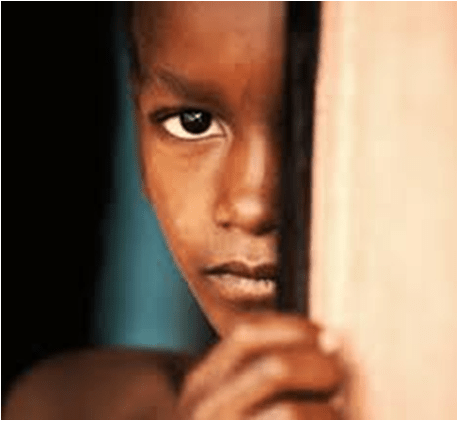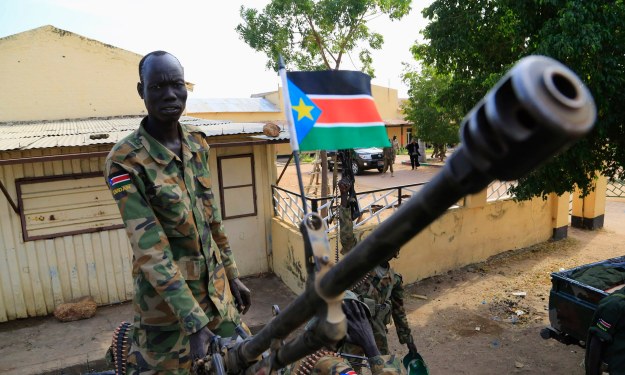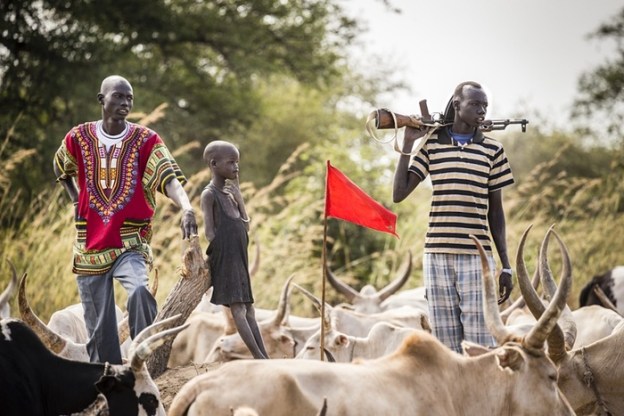 It is more than 25 years since the adoption of the United Nations (UN) Convention on the Rights of the Child (CRC) in 1989 which came just four years after the UN set out its minimum standard rules for the administration of juvenile justice. The UN published Guidelines for the Prevention of Juvenile Delinquency and the Rules for the Protection of Juveniles Deprived of Their Liberty in 1990, which set pace for the implementation of the Convention. There is considerable variation in how progress and expectations of juvenile justice have been applied globally. In its general comment on global children’s rights in juvenile justice (2007:No.10), the UN Committee on the Rights of the Child recognized the difficulties with which state parties still face in achieving full compliance with the CRC provisions. The Committee highlighted development and implementation of measures for dealing with children in conflict with the law without resorting to judicial proceedings, with the use of detention only as a measure of last resort, as being one area where states have underperformed.
It is more than 25 years since the adoption of the United Nations (UN) Convention on the Rights of the Child (CRC) in 1989 which came just four years after the UN set out its minimum standard rules for the administration of juvenile justice. The UN published Guidelines for the Prevention of Juvenile Delinquency and the Rules for the Protection of Juveniles Deprived of Their Liberty in 1990, which set pace for the implementation of the Convention. There is considerable variation in how progress and expectations of juvenile justice have been applied globally. In its general comment on global children’s rights in juvenile justice (2007:No.10), the UN Committee on the Rights of the Child recognized the difficulties with which state parties still face in achieving full compliance with the CRC provisions. The Committee highlighted development and implementation of measures for dealing with children in conflict with the law without resorting to judicial proceedings, with the use of detention only as a measure of last resort, as being one area where states have underperformed.
Uganda’s performance has been acknowledged by the international community in terms of its policy approach to address juvenile delinquency in compliance with CRC. For instance, the African Child Policy Forum (2008) ranked Uganda 12th in respect of its legal protection framework for children. In addition, in 2010, Uganda’s framework of taking charge of children in conflict with the law through its family and children courts, and the establishment of remand homes and the National Rehabilitation Centre was also commended by the African committee of experts on the Rights and Welfare of African Child. However, it is critical to concede that, in reference to the Beijing Rules of 1985 (UN, 1985), Uganda appears to have developed and implemented measures that promote judicial proceedings and use of detention as a strategy for advancing juvenile justice.
This essay attempts to address this question by discussing the right to liberty and how detention impacts children in conflict with the law, referring to the guidelines set by the United Nations for the administration of juvenile justice and other international instruments. It will focus on how detention of children impacts on their welfare and development by examining deprivation of the right to liberty and the condition of child detention in Uganda. Lastly, the essay will also reflect on whether children in conflict with the law in Uganda are handled in the manner that conforms to the requirements of the international standards set by the United Nations and other human rights instruments which protect the rights of children.
The United Nations Beijing Rules of 1985 for the Protection of Juveniles Deprived of Their Liberty define deprivation of liberty as
“[…] any form of detention or imprisonment or the placement of a person in a public or private custodial setting, from which this person is not permitted to leave at-will, by order of any judicial, administrative or other public authority”. (UN, 1985)
The principle of justice in Uganda presumes one to be innocent until proven guilty with access to legal representation and fair hearing by a competent and independent body (Constitution of the Republic of Uganda, 1995). These principles conform to those enshrined in international law. The involvement of children in the formal justice process can pose traumatizing and damaging consequence in their lives. Simkins (2009:9-15) attributes these damaging consequences to the shift in the nature of juvenile justice in the last fifteen years, from rehabilitative to punitive justice system. Simkins further suggests that, in response to the consequences of punitive justice system on the future of children, the adults charged with the decision making responsibilities on behalf of children need to fully understand the long-term consequences of their decisions on children.
While the Government of Uganda usually rationalises its use of deprivation of liberty for its children in conflict with the law as a matter of public safety, there are increasing concerns that pre-trial detention in Uganda tends to deprive children suspected of conflicting with the law of their most fundamental rights. The United States Human Rights Report for Uganda for instance pointed out that, the two detention facilities in Kampala whose combined capacity is 75, held 322 children in 2012. There is significant evidence of repeated recommendations that strongly urge state parties, Uganda inclusive, to stringently use detention of children as a measure of last resort in the shortest possible time (UN Beijing Rules, 1985). The international instruments that provide for the protection of children in conflict with the law and the 1995 Constitution of Uganda consistently propose and encourage the use of alternative measures available to detention. This alternative must promote prevention, rehabilitation and reintegration of delinquency. Uganda, on the contrary, seems to have taken on deprivation of liberty not only as a sentencing but a pre-sentencing option with little attention towards prevention, rehabilitation and reintegration of child offenders.
This approach of detention has led to congestion in children detention centres. Although the detention of children is legally provided for in both domestic and international law, particularly where the offender is dangerous to others or at risk themselves, these laws seem to be inconsistently implemented in Uganda. This may be due to the lack of political will seen in budget allocation towards children diversion programmes and the institutions that implement them. The U.S Department of State in its Human Rights Report for Uganda highlighted severe congestion as a concern at juvenile detention facilities. According to the report, the Kampala Remand Home, designed for 45 children, held 148 and 137 in 2012 and 2013 respectively. Naguru Reception Center, designed for 30 children, held 174 in 2012 and 116 in 2013. Considering the statistics presented, it can be argued that the congestion in the detention facilities is a reflection of issues in the system of administrating juvenile justice.
However, the UN Beijing Rules of 1985 (UN, 1985) provide that in extreme circumstances where safeguard is the only alternative for at risk offenders, states must take measures that are guided by fairness and equality. According to these standards, state parties must take measures that guard the well-being, development, rights and interests of all young people. State parties must also adapt specialized approaches to motivation, needs and opportunity to commit infractions for children. Lastly, both state actors and society members need to consider that some youthful behaviour is part of normal maturation and that labelling children as delinquent or deviant may contribute to future delinquent behaviours especially if those accts do not cause harm on either the child or another person.
It can be noted that detention centres in Uganda seem to have challenges meeting these international requirements for the detention of juveniles. For example, children do not have access to a suitably prepared, nutritious and balanced diet served at meal times. There is little clear information specifically on the situation of feeding in juvenile detention centres. However as cited in the US Department of State Reports on Uganda’s Human Rights Situation for 2011, 2012 and 2013 respectively, feeding in detention facilities is insufficient and short of required dietary needs. As authoritatively defined by the Committee on Economic, Social and Cultural Rights (Committee on ESCR) in its General Comment 12:
“The right to adequate food is realized when every man, woman and child, alone or in community with others, has physical and economic access at all times to adequate food or means for its procurement.”
Education, opportunities to learn working skills and recreation must be provided to children in detention (CRC, 1989). This is further emphasised in education policy (the Universal Primary Education (UPE) (1997)). The UPE policy of 1997 proposed free and compulsory access to primary education. This was seen as a positive move by the government towards the achievement of preventive mechanisms for dealing with delinquency without resorting to judicial proceedings such as diversion, capital development, gender equality and other preventive measures to delinquency. However, children in detention do not have access to education and vocational skill training as detention facilities lack the capacity to ensure access to education for school going children and vocational skill training for those not in schools. The failure of the justice system in ensuring continued access to education by children in detention infringes on their rights to education. Article 26 of the Universal Declaration of Human Rights (UDHR) (1948) provides that access to education is a fundamental right and that the education should be used to enhance a person’s capabilities. It can be argued that the violation of this right might affect the development of the child.
Extreme disciplinary measures are used in juvenile detention centres in Uganda. The 2012 Global Initiative to End All Corporal Punishment of Children country report for Uganda highlighted that despite the law, children are tortured and beaten in police stations and other detention facilities. Newell (2000:115 – 126) asserts that it has always been wrong to abuse children just as it is to adults. Therefore, the use of corporal punishment cannot be justified. Newell argues that, corporal punishment and other humiliating forms of disciplinary actions taken on children have a significant impact on the long-term development of violent attitudes and actions both in their childhood and their later life. The application of such disciplinary measures that violate Article 37 of CRC is detrimental for the health and development of children in conflict with the law. As Ren and Friday (2010:18-19) in their book ‘Delinquency and Juvenile Justice Systems in The Non-Western World’ noted, there are conspicuous discrepancies amongst states in their response to juvenile offenders and the international standards. To them, several states, caregivers, and judicial officials have not given adequate considerations to the concept of juvenile justice and delinquency and its fundamental principles established by the UN (1990a).
In conclusion, this essay examined the international framework for the protection of children in conflict with the law and how this framework impacts on administration of juvenile justice in Uganda. It has shown that Uganda has established a working structure whose responsibility is to administer juvenile justice; the structure seams to focus its interventions more on response to delinquency than to responsive measures. The essay points out that, despite the various interventions adapted by the government of Uganda, the country still appears to struggle in meeting the minimum requirements set by the International standards for handling children in conflict with the law. It found that more emphasis has been put on judicial proceedings at the expense of social and welfare structures that would provide a platform for alternative handling of children in conflict with the law. The result is that cases involving children that would otherwise require social and welfare interventions find their way into formal justice proceedings and often into detention. Lastly, the essay argued that there seems to be a significant gap between the rhetoric of juvenile justice and the reality. However, if Uganda can adhere to the international principles of delinquency and juvenile justice, detention of children will not be necessary with the exception of extreme cases involving children demonstrably at social risk.


